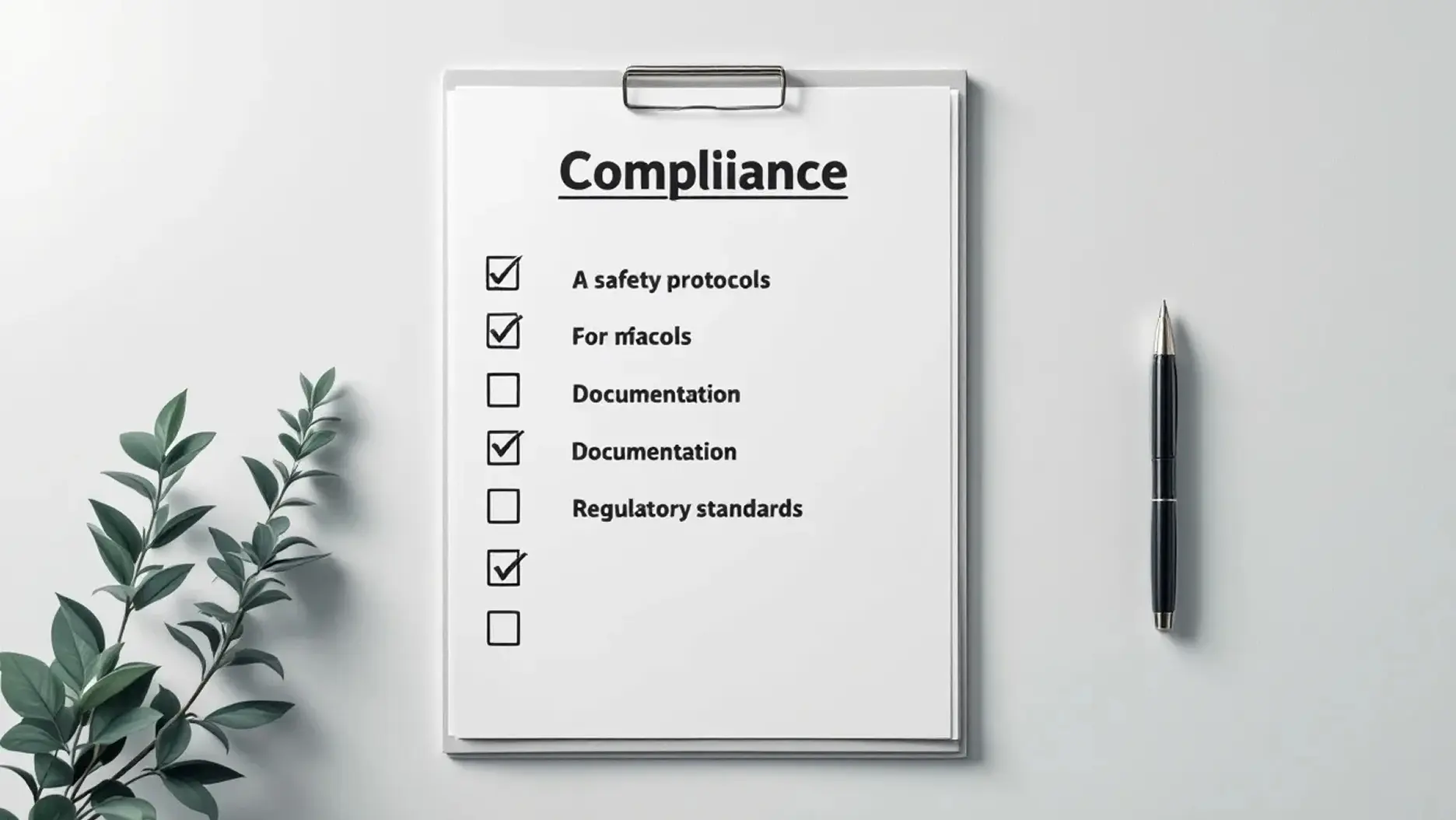Australian payroll compliance has never been more critical for businesses operating across the continent. With recent high-profile underpayment cases resulting in combined back-payments exceeding $1 billion, employers face unprecedented scrutiny from the Fair Work Ombudsman and the australian taxation office. The complexity of Australia’s multi-tiered legal framework, encompassing federal legislation, state-based regulations, and industry-specific requirements, makes accurate payroll management both challenging and essential for business sustainability.
This comprehensive guide will navigate you through every aspect of australian payroll, from understanding the essential regulatory framework to implementing cutting-edge technology solutions. Whether you’re a seasoned payroll professional or new to managing an entire workforce, you’ll discover practical strategies to ensure compliance, avoid penalties, and streamline your payroll processes for optimal efficiency.

Understanding Australian Payroll Systems
Australian payroll management encompasses far more than simply calculating wages paid to employees. It represents a comprehensive system of processes, regulations, and compliance mechanisms that govern how employers calculate, distribute, and report employee compensation across the nation. The scope includes managing tax and superannuation obligations, leave entitlements under national employment standards, and various state-based requirements that can significantly impact your payroll system.
The federal government maintains primary responsibility for income tax through payg withholding, superannuation obligations, and workplace relations through the fair work act. However, individual state and territory governments retain authority over workers’ compensation, payroll tax, and certain employment conditions. This dual system creates unique challenges for businesses operating across multiple jurisdictions, requiring careful attention to varying requirements that can affect employees wages and overall compliance strategies.
Key differences between Australian payroll and international systems include the mandatory superannuation guarantee, sophisticated award wage structures covering over 120 modern awards, and the single touch payroll reporting system that requires real-time data submission to tax authorities. These distinctive features make Australian payroll one of the most complex systems globally, demanding specialized knowledge and robust payroll processes to maintain compliance.
The importance of payroll accuracy extends beyond mere regulatory compliance. Accurate payroll directly impacts employee morale, business reputation, and financial stability. Companies experiencing payroll errors face not only significant penalties but also potential legal action, damaged relationships with their workforce, and costly remediation processes that can span multiple financial years.
Essential Regulatory Framework
The fair work act 2009 serves as the cornerstone of Australia’s employment legislation, establishing comprehensive standards for payroll processes across all industries. This crucial aspect of employment law governs minimum wage rates, working hours, leave entitlements, and termination procedures that directly impact payroll calculations. Understanding this legal framework is essential for maintaining compliance and ensuring employees receive their correct entitlements.
National Employment Standards and Modern Awards
The national employment standards establish ten minimum entitlements that apply to all employees, regardless of their industry or role. These standards cover maximum working hours, flexible working arrangements, parental leave, annual leave, personal and carer’s leave, community service leave, long service leave, public holidays, notice of termination, and redundancy pay. Each entitlement carries specific calculation requirements that must be accurately reflected in your payroll system.
Modern Awards complement the national employment standards by providing industry-specific minimum conditions. With over 120 awards covering different industries and occupations, determining the correct award can be complex but is essential for calculating proper pay rates, penalty rates for overtime, weekend and public holiday work, and various allowances. The Award Navigator tool provided by the Fair Work Ombudsman can assist in identifying the appropriate award for your employees.
Enterprise Bargaining Agreements can override award conditions where they provide better terms for employees. These agreements create additional payroll obligations and must be carefully implemented to ensure agreement compliance. Regular review of these agreements is necessary as they may include annual wage increases, changed conditions, or new entitlements that affect payroll calculations.
Federal Responsibilities
| State/Territory Responsibilities
|
Income tax (PAYG) withholding
| Payroll tax administration
|
Superannuation guarantee
| Workers’ compensation insurance
|
Fair Work Act compliance
| State-specific employment conditions
|
Single Touch Payroll reporting | Long service leave (varies by state) |
Pay As You Go (PAYG) Withholding
The PAYG withholding system requires employers to withhold tax from employees wages before payment, with rates determined by annual salary projections and residency status. For the 2024-25 financial year, tax rates range from 0% for earnings below the tax-free threshold of $18,200 to 45% for income above $180,000, plus the 2% Medicare levy on most taxpayers.
Employees claiming the tax-free threshold typically have lower withholding amounts, while those in multiple employment situations may request higher withholding rates to avoid year-end tax debts. payroll staff must carefully manage these elections and update payroll systems when employees change their circumstances or provide new tax file number declarations.
Quarterly Business Activity Statement reporting requires precise calculation and timely remittance of withheld amounts to the australian taxation office. Late payments can result in penalty charges and interest, making accurate payroll processing and timely reporting essential for avoiding financial penalties. The integration of payroll systems with BAS reporting helps ensure accuracy and reduces administrative burden.
Pay As You Go (PAYG) Withholding
Current superannuation obligations require employers to contribute 11% of eligible employees’ ordinary time earnings to complying superannuation accounts. This rate applies to employees earning more than $450 per month, with payments due by the 28th day of each month following the quarter in which they were earned. The rate is legislated to increase to 12% by July 2025, requiring payroll system updates and employee communication.
Quarterly payment deadlines are strictly enforced, with late payments triggering the Superannuation Guarantee Charge, including administrative fees and potential audit attention. Default fund selection rules require employers to offer choice of fund or direct contributions to MySuper products where employees haven’t made an election.
SuperStream compliance mandates electronic payment and data transmission for all superannuation contributions. This system requires payroll systems to generate specific data formats and maintain detailed records of all superannuation details and payment confirmations. Non-compliance can result in administrative penalties and additional reporting requirements.

Single Touch Payroll (STP) Compliance
Single touch payroll reporting revolutionized Australian payroll by requiring real-time submission of payroll data to the australian taxation office each time employees are paid. STP Phase 2, implemented from January 2022, expanded reporting requirements to include additional data elements and enhanced employee information, making compliance even more critical for payroll professionals.
The system requires reporting of gross pay amounts, payg withholding, superannuation contributions, and various allowances through STP-enabled software. All employers, regardless of size, must comply with these reporting obligations, with some concessions available for micro employers (19 or fewer employees) regarding timing and software requirements.
Required data elements include employee personal details, gross payments, tax withheld, superannuation contributions, and allowances paid during each pay period. The accuracy of this data is crucial as it forms the basis for employee income statements and pre-fills tax returns, making errors immediately visible to both employees and tax authorities.
STP-enabled software must be certified by the australian taxation office and capable of transmitting data in the required format. This software typically integrates with existing payroll systems or provides comprehensive payroll management capabilities, including award interpretation, leave calculations, and automated compliance checks.
STP Implementation Process
We delved deep into Alka Power's inventory workflows, from raw material procurement (like resins and preforms) to finished goods distribution. Our work included:
- Software Selection:
Choose certified STP-enabled payroll software that meets your business requirements. - Employee Data Collection:
Gather complete employee information including tax file numbers and superannuation details. - System Configuration:
Set up pay rates, award conditions, and reporting parameters. - Testing Phase:
Conduct trial runs to ensure accurate data transmission. - Go-Live:
Begin regular STP reporting with each pay run. - Ongoing Monitoring:
Regular verification of successful data transmission and error resolution.
Finalisation declarations must be submitted annually, typically by July 14th, confirming the accuracy of all payroll data reported throughout the financial year. This process enables the australian taxation office to issue income statements to employees and facilitates tax return processing.
State-Based Payroll Tax Systems
Payroll tax represents a significant compliance obligation for larger employers, with each state and territory maintaining its own threshold levels, tax rates, and reporting requirements. Understanding these variations is essential for businesses operating across multiple jurisdictions and affects overall payroll processing strategies.
2024 State Payroll Tax Comparison
State/Territory
| Annual Threshold
| Tax Rate | Reporting Frequency
|
New South Wales
| $1,200,000
| 4.85%
| Monthly
|
Victoria
| $700,000
| 1.2% - 4.85%
| Monthly
|
Queensland
| $1,300,000
| 4.75%
| Monthly
|
Western Australia
| $1,500,000
| 5.5%
| Monthly
|
South Australia
| $1,500,000
| 0% - 4.95%
| Monthly
|
Tasmania
| $1,250,000
| 4.0% - 6.1%
| Monthly
|
Northern Territory
| $1,500,000
| 5.5%
| Monthly
|
Australian Capital Territory
| $2,000,000
| 6.85%
| Monthly
|
NSW maintains the largest threshold at $1.2 million with a flat rate of 4.85%, while Victoria implements a progressive rate structure starting at 1.2% for smaller payrolls. Queensland’s $1.3 million threshold with a 4.75% rate provides middle-ground positioning, whereas the Australian Capital Territory imposes the highest rate at 6.85% but with the largest threshold of $2 million.
Interstate employer obligations require careful consideration of grouping provisions, where related entities may be treated as a single employer for payroll tax purposes. This can result in unexpected tax obligations for businesses with multiple entities or interstate operations, requiring professional advice to navigate complex aggregation rules.
Monthly reporting requirements in most jurisdictions demand accurate calculation and timely submission of payroll tax returns. Late lodgment and payment can result in penalties and interest charges, making robust payroll processes essential for maintaining compliance across multiple states.
Payroll Setup and Implementation
Establishing compliant payroll operations begins with proper business registration and regulatory compliance. The Australian Business Number registration process provides the foundation for all payroll activities, enabling employers to meet their tax obligations and access necessary government services for payroll management.
PAYG withholding registration with the australian taxation office is mandatory for all employers and enables the legal authority to withhold tax from employees wages. This registration must be completed before the first employee is paid and requires ongoing compliance with reporting and remittance obligations throughout the business operation.
Workers compensation insurance requirements vary significantly by state and industry, with some jurisdictions mandating coverage from the first employee while others provide exemptions for smaller businesses. Understanding these requirements is crucial as workers compensation premiums are often calculated based on wages paid and can represent a significant cost component in payroll budgeting.
Employee Onboarding Documentation
Proper employee onboarding requires collection of essential documentation to ensure compliance and accurate payroll processing. The Tax File Number Declaration (NAT 3092) allows employees to claim the tax-free threshold and provides necessary information for calculating correct payg withholding amounts. Superannuation Choice Product forms enable employees to nominate their preferred superannuation fund or accept default arrangements.
Bank account details for electronic payments should be verified through direct employee provision rather than third-party sources to prevent fraud and ensure accurate payment delivery. Emergency contact information and visa status verification for international employees may be required for compliance with immigration and workplace laws.
Chart of accounts setup for payroll transactions should align with Australian accounting standards and facilitate accurate financial reporting. Separate accounts for gross wages, tax liabilities, superannuation obligations, and various deductions enable clear tracking of payroll expenses and liabilities throughout each pay period.

Payroll Processing Best Practices
Effective payroll processing requires systematic approaches to timesheet collection, approval workflows, and payment calculations that ensure accuracy while maintaining efficiency. Weekly, fortnightly, and monthly pay cycle considerations impact cash flow, administrative burden, and employee satisfaction, requiring careful balance based on industry norms and business requirements.
Timesheet collection and approval workflows should incorporate multiple verification points to prevent errors and ensure accurate hours worked recording. Electronic timekeeping systems can integrate directly with payroll software, reducing manual data entry errors while providing audit trails for compliance purposes. Supervisor approval processes help verify overtime pay authorizations and ensure proper award application.
Leave accrual calculations for annual leave and personal leave must comply with national employment standards and applicable awards. Full-time employees accrue four weeks annual leave per year (five weeks for shift workers), while personal/carer’s leave accrues at ten days annually. Accurate calculation and tracking of these entitlements prevents both over and underpayment scenarios that can create compliance issues.
Payroll Processing Checklist
- Pre-Processing: Verify timesheet submissions, approve overtime, update employee changes.
- Calculation Phase: Process gross pay, calculate deductions, verify award compliance.
- Review Stage: Check calculations, verify unusual amounts, confirm superannuation contributions.
- Payment Processing: Generate payment files, process electronic transfers, and distribute payslips.
- Post-Processing: Submit STP reports, update leave balances, archive payroll records.
Allowances, bonuses, and fringe benefits processing requires careful consideration of tax implications and superannuation obligations. Some allowances may be superannuation-exempt while others form part of ordinary time earnings, affecting both employee take-home pay and employer contribution obligations. Understanding these distinctions is essential for accurate payroll processing and compliance with superannuation obligations.
Electronic payment methods have become standard practice, offering efficiency and security advantages over traditional payment methods. Australian banks support direct deposit arrangements that integrate with payroll systems, enabling automated payment processing while maintaining detailed transaction records for compliance and reconciliation purposes.
Compliance Challenges and Risk Management
Understanding potential compliance challenges helps payroll professionals implement effective risk management strategies that protect both the business and its employees. Recent enforcement activities by the Fair Work Ombudsman have highlighted the serious consequences of payroll errors, with individual penalties reaching $66,600 per breach and corporate penalties escalating to $333,000 for serious contraventions.
Fair Work Ombudsman audit processes can be triggered by employee complaints, industry-wide investigations, or random compliance checks. These audits examine payroll records, award compliance, leave calculations, and superannuation payments across extended periods, potentially covering multiple financial years. Maintaining comprehensive records and ensuring compliance helps minimize audit impact and demonstrates good faith efforts to meet legal requirements.
Record-keeping requirements mandate retention of payroll records for seven years minimum, including timesheets, payslips, superannuation records, and any documents supporting payroll calculations. Electronic storage systems must maintain data integrity and accessibility throughout the retention period while protecting sensitive employee information from unauthorized access.
Common Payroll Errors and Prevention
Incorrect award interpretation represents one of the most frequent compliance failures, particularly in industries with complex penalty rate structures or multiple employee classifications. Regular training for payroll staff and use of award interpretation tools can help prevent these errors, while periodic audits of pay calculations can identify potential issues before they become significant problems.
Superannuation payment delays and calculation errors create both immediate compliance issues and long-term employee retirement impacts. Automated calculation systems and monthly payment schedules help ensure timely compliance, while regular reconciliation of superannuation accounts verifies successful payment processing and identifies any technical issues.
PAYG withholding mistakes can result in significant year-end complications for employees and additional administrative burden for employers. Regular verification of tax calculations, proper handling of tax file number declarations, and timely remittance of withheld amounts helps maintain compliance with australian taxation office requirements.
Leave entitlement miscalculations often involve complex interactions between awards, enterprise agreements, and national employment standards. Understanding accrual rates, cashing out provisions, and loading calculations requires specialized knowledge and careful system configuration to ensure employees receive correct entitlements throughout their employment.
Technology Solutions and Automation
Modern payroll management increasingly relies on sophisticated technology solutions that automate complex calculations while ensuring compliance with ever-changing regulatory requirements. Cloud-based payroll software offers significant advantages over traditional on-premise solutions, including automatic updates for legislative changes, remote access capabilities, and reduced IT infrastructure requirements.
Integration capabilities with time and attendance systems eliminate manual data entry while providing accurate hours worked information for payroll calculations. These integrations can automatically apply penalty rates for weekend or holiday work, calculate overtime pay according to award requirements, and track leave usage against accrued entitlements.
Automated award interpretation features help prevent common compliance errors by applying current pay rates, penalty rates, and allowances according to the relevant modern award or enterprise agreement. These systems regularly update with Fair Work Commission decisions and can alert payroll professionals to significant changes affecting their workforce.
Technology Selection Criteria
- STP Compliance: Certified single touch payroll reporting capabilities.
- Award Integration: Current award rates and automatic updates.
- Scalability: Ability to grow with business requirements.
- Security Features: Data encryption and access controls.
- Support Services: Local support and training resources.
- Integration Options: Compatibility with existing business systems.
Mobile payroll access and employee self-service portals enhance efficiency while reducing administrative burden on payroll staff. Employees can access payslips, update personal details, submit leave requests, and view superannuation details through secure online portals, reducing phone inquiries and email requests
API connections for accounting software synchronization ensure accurate financial reporting while reducing duplicate data entry requirements. These integrations automatically post payroll transactions to general ledger accounts, update cash flow projections, and provide real-time visibility into payroll expenses and liabilities.
Artificial intelligence applications in payroll management can detect anomalies, predict compliance issues, and optimize payroll processes through pattern recognition and automated error detection. These advanced features help prevent mistakes before they occur while providing insights for continuous process improvement.

Year-End Procedures and Reporting
Year-end payroll procedures require careful coordination of multiple reporting obligations and compliance requirements that span different regulatory authorities and deadlines. The Payment Summary Annual Report process through single touch payroll reporting has streamlined many traditional year-end activities while introducing new verification requirements for payroll professionals.
Fringe Benefits Tax obligations, with a financial year ending March 31, require separate tracking and reporting of non-cash benefits provided to employees. Common fringe benefits include motor vehicles, entertainment, housing subsidies, and low-interest loans that may trigger FBT obligations for employers. Understanding these obligations helps prevent unexpected tax liabilities and ensures proper reporting compliance.
WorkCover premium calculations and annual reconciliations involve complex interactions between payroll data and insurance classifications that vary by state and industry. Accurate payroll records enable precise premium calculations while supporting any disputes or audits of workers compensation costs.
Year-End Compliance Timeline
Month
| Key Activities
| Deadlines
|
March
| FBT year-end procedures
| March 31
|
June
| Payroll tax reconciliations
| June 30
|
July
| STP finalisation declarations
| July 14
|
July
| nnual leave loading calculations
| July 31
|
August
| WorkCover reconciliations
| August 31
|
Employee termination procedures require careful calculation of final pay entitlements, including outstanding annual leave, long service leave (where applicable), and notice pay requirements. These calculations must consider award provisions, enterprise agreement terms, and national employment standards to ensure employees receive correct entitlements while protecting the business from potential disputes.
Document retention and archival requirements extend beyond basic payroll records to include correspondence, policy documents, and evidence supporting payroll decisions. Electronic document management systems can facilitate organized storage while ensuring accessibility for audit purposes and legal proceedings.
Future Trends in Australian Payroll
Industrial Relations Reform continues to evolve with proposed changes to secure jobs legislation, enterprise bargaining processes, and wage theft penalties. These reforms may introduce new compliance obligations for payroll management while strengthening enforcement mechanisms for existing requirements. Staying informed about proposed changes helps businesses prepare for implementation and maintain competitive advantages.
The scheduled increase of superannuation guarantee rates to 12% by July 2025 represents a significant change affecting all Australian employers. This increase will impact payroll costs, employee communications, and system configurations across the entire workforce. Early preparation and employee education can help smooth this transition while ensuring continued compliance.
Digital transformation initiatives are introducing blockchain technology for payroll verification, advanced analytics for workforce planning, and artificial intelligence for predictive compliance management. These technologies offer opportunities for improved accuracy and efficiency while requiring investment in new skills and system capabilities.
Enhanced focus on pay equity and gender pay gap reporting reflects growing social awareness and potential regulatory requirements. Organizations implementing comprehensive pay equity analysis and transparent reporting practices position themselves favorably for potential legislative changes while supporting broader social objectives.
Environmental, Social, and Governance considerations increasingly influence payroll practices through sustainable technology choices, ethical supplier selection, and comprehensive reporting on workforce diversity and equity measures. These factors may become competitive differentiators as stakeholders expect greater corporate responsibility in all business operations.
Preparing for Future Changes
Successful adaptation to future trends requires proactive planning and continuous learning approaches that keep pace with regulatory developments and technological advances. Regular review of payroll processes, investment in staff training, and engagement with professional associations help maintain current knowledge while building capabilities for future requirements.
Scenario planning for potential legislative changes enables businesses to assess impact and develop implementation strategies before changes become mandatory. This approach reduces compliance risks while providing competitive advantages through early adoption of best practices and efficient processes.
Technology roadmap development should consider both current needs and anticipated future requirements, ensuring payroll systems can evolve with changing business needs and regulatory environments. This strategic approach maximizes technology investments while minimizing disruption from system changes and upgrades.
Professional development for payroll professionals remains crucial as the complexity of australian payroll continues to increase. Formal qualifications, continuing education, and professional certification help ensure payroll staff maintain current knowledge while developing expertise for emerging challenges and opportunities.
The landscape of australian payroll will continue evolving with technological advancement, regulatory changes, and shifting workforce expectations. Organizations that invest in robust systems, qualified staff, and proactive compliance strategies will be best positioned to navigate these changes while maintaining competitive advantages in attracting and retaining talent.
Effective payroll management represents far more than administrative necessity—it forms the foundation of positive employee relationships and business sustainability. By understanding regulatory requirements, implementing best practices, and preparing for future trends, businesses can transform payroll from a compliance burden into a strategic advantage that supports long-term success and growth.
As you implement these strategies within your organization, remember that professional advice and ongoing education remain essential for navigating the complexities of australian payroll. Start by auditing your current payroll processes against these compliance requirements, identify areas for improvement, and develop a systematic approach to maintaining accuracy and efficiency in your payroll operations.
Stay Compliant. Pay Confidently.
Reduce risk, fix blind spots, and streamline your pay runs. Our payroll specialists review your awards, STP setup, super, and PAYG to surface issues before they become penalties—then give you a clear, prioritised action plan.
Expert setup, automation, and award interpretation—done right.
The information and tips shared on this blog are meant to be used as learning and personal development tools as you launch, run and grow your business. While a good place to start, these articles should not take the place of personalised advice from professionals. As our lawyers would say: “All content on WAO’s blog is intended for informational purposes only. It should not be considered legal or financial advice.” Additionally, WAO is the legal copyright holder of all materials on the blog, and others cannot re-use or publish it without our written consent.